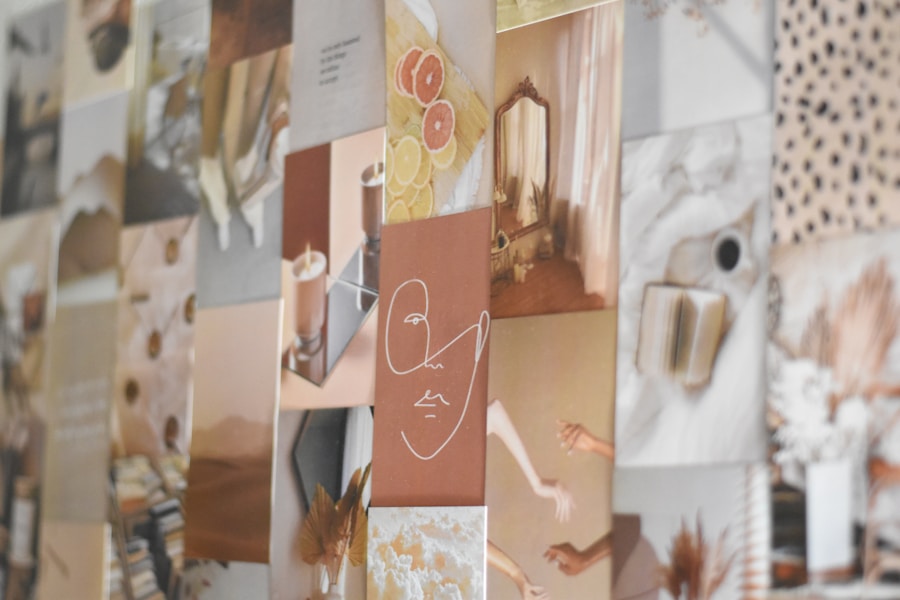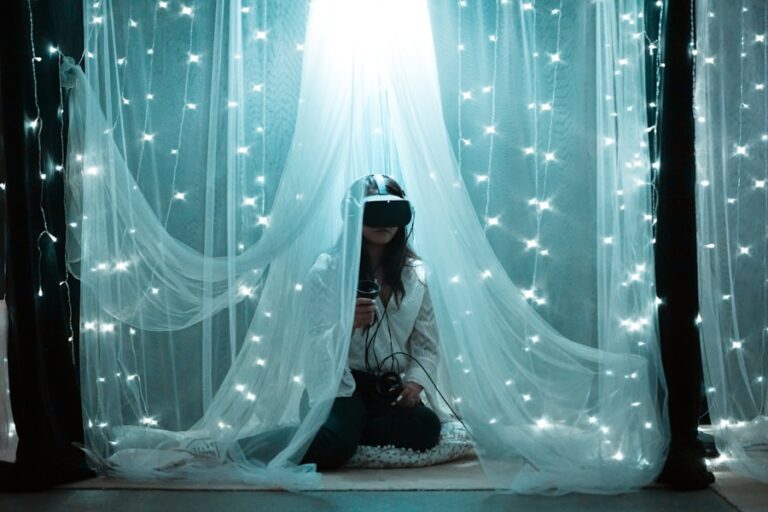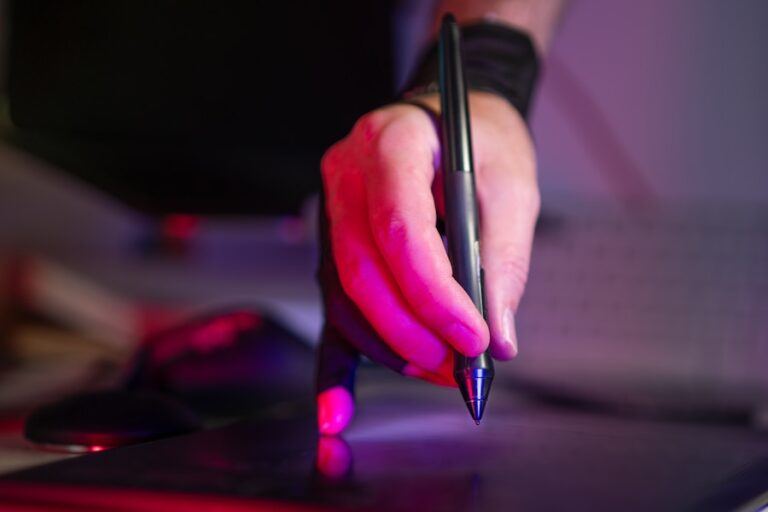Unlock Your Creativity: The Basics of Digital Art for Beginners
Digital art is a form of artistic expression that utilizes digital technology as a medium. It encompasses a wide range of artistic practices, including digital drawing, painting, photography, and graphic design. Unlike traditional art forms, digital art is created and manipulated using electronic devices such as computers, tablets, and smartphones, as well as specialized software and tools. This allows artists to explore new creative possibilities and experiment with different techniques and styles.
One of the key characteristics of digital art is its versatility and accessibility. With the use of digital tools and software, artists can easily edit, manipulate, and transform their artworks with just a few clicks. This flexibility allows for greater experimentation and creative freedom, as artists can easily undo mistakes, try out different color schemes, and explore various visual effects. Additionally, digital art can be easily shared and distributed online, reaching a global audience and connecting with other artists and art enthusiasts.
Essential Tools and Software for Digital Art
To create digital art, artists need to have the right tools and software at their disposal. One of the most essential tools for digital art is a graphics tablet, which allows artists to draw and paint directly onto a digital canvas using a stylus. Graphics tablets come in various sizes and specifications, with some models offering pressure sensitivity and tilt recognition for a more natural drawing experience. In addition to a graphics tablet, artists also need a powerful computer or laptop with a high-resolution display and a dedicated graphics card to handle the demands of digital art software.
When it comes to software, there are several popular options for digital drawing and painting, including Adobe Photoshop, Corel Painter, and Procreate. These software programs offer a wide range of brushes, tools, and features that allow artists to create stunning digital artworks with ease. In addition to drawing and painting software, artists may also use 3D modeling software such as Blender or ZBrush to create three-dimensional digital sculptures and designs. Overall, having the right tools and software is essential for creating high-quality digital art.
Basic Techniques for Digital Drawing and Painting
Digital drawing and painting require a different set of techniques compared to traditional art forms. One of the fundamental techniques in digital art is layering, which allows artists to work on different elements of their artwork separately and then combine them seamlessly. This enables artists to make changes and adjustments without affecting the entire composition, making the creative process more flexible and efficient. Another important technique is using different brush settings and textures to create varied strokes and effects, adding depth and dimension to the artwork.
In addition to layering and brush techniques, understanding color theory is crucial for creating visually appealing digital artworks. Artists need to have a good grasp of color harmonies, contrasts, and blending techniques to effectively convey mood and atmosphere in their artworks. Furthermore, mastering the use of digital tools such as selection tools, masks, and filters can greatly enhance the quality and detail of digital artworks. By learning and practicing these basic techniques, artists can develop their skills and create captivating digital drawings and paintings.
Exploring Different Styles and Themes in Digital Art
Digital art offers endless possibilities for exploring different styles and themes. From realistic digital paintings to abstract digital collages, artists can experiment with various artistic styles and techniques to express their creativity. Some popular styles in digital art include digital illustration, concept art, photo manipulation, and digital mixed media. Each style offers its own unique set of challenges and opportunities for artists to explore.
In addition to styles, artists can also explore different themes in their digital artworks, such as nature, fantasy, science fiction, or surrealism. By choosing a specific theme or subject matter, artists can develop a cohesive body of work that reflects their personal interests and artistic vision. Furthermore, exploring different styles and themes can help artists expand their creative horizons and discover new ways of expressing themselves through digital art.
Tips for Developing Your Creative Process
Developing a strong creative process is essential for producing consistent and impactful digital artworks. One tip for developing your creative process is to establish a regular practice routine. By setting aside dedicated time for creating digital art on a regular basis, artists can develop their skills and maintain creative momentum. Additionally, experimenting with different techniques, styles, and subjects can help artists discover new sources of inspiration and push their creative boundaries.
Another tip for developing your creative process is to seek feedback from other artists and art enthusiasts. Sharing your work with others can provide valuable insights and perspectives that can help you improve your skills and refine your artistic vision. Additionally, seeking out mentorship or joining online communities and forums can provide opportunities for learning from experienced artists and connecting with like-minded individuals. By continuously refining your creative process, you can elevate the quality of your digital artworks and develop a unique artistic voice.
Finding Inspiration and Overcoming Creative Blocks
Finding inspiration is an essential part of the creative process for digital artists. One way to find inspiration is to explore different sources of visual stimuli, such as nature, architecture, photography, or other forms of art. By observing the world around you and seeking out diverse visual experiences, you can gather ideas and references that can fuel your creativity. Additionally, studying the works of other artists and staying informed about current trends in digital art can provide fresh perspectives and inspire new ideas.
Creative blocks are common challenges that artists face when creating digital art. One way to overcome creative blocks is to take a break from your artwork and engage in other activities that stimulate your mind and senses. This could include going for a walk in nature, listening to music, or engaging in physical exercise. By giving yourself time to recharge and relax, you can alleviate mental fatigue and regain your creative energy. Another strategy for overcoming creative blocks is to experiment with new techniques or mediums that you haven’t tried before. By stepping out of your comfort zone and trying something new, you can break free from creative stagnation and reignite your passion for creating digital art.
Sharing and Showcasing Your Digital Artworks
Once you have created digital artworks that you are proud of, it’s important to share them with others and showcase your talent. One way to do this is by creating an online portfolio or website where you can display your artworks in an organized and professional manner. This allows potential clients, collaborators, or fans to easily view your work and learn more about your artistic practice. Additionally, sharing your artworks on social media platforms such as Instagram, Facebook, or Twitter can help you reach a wider audience and connect with other artists and art enthusiasts.
Participating in art exhibitions, fairs, or conventions is another great way to showcase your digital artworks in a physical setting. This provides an opportunity to network with other artists, collectors, and industry professionals while gaining exposure for your work. Furthermore, entering art competitions or submitting your artworks to online galleries can help you gain recognition and build your reputation as a digital artist. By actively sharing and showcasing your digital artworks, you can establish yourself as a professional artist and create opportunities for growth and success in the digital art world.
In conclusion, digital art is a dynamic and versatile form of artistic expression that offers endless possibilities for creativity and innovation. By understanding the fundamentals of digital art, mastering essential tools and techniques, exploring different styles and themes, developing a strong creative process, finding inspiration, overcoming creative blocks, and sharing your artworks with others, you can elevate your skills as a digital artist and make a meaningful impact in the art world. Whether you are an aspiring artist or an experienced professional, embracing the potential of digital art can open up new avenues for self-expression and artistic fulfillment.






